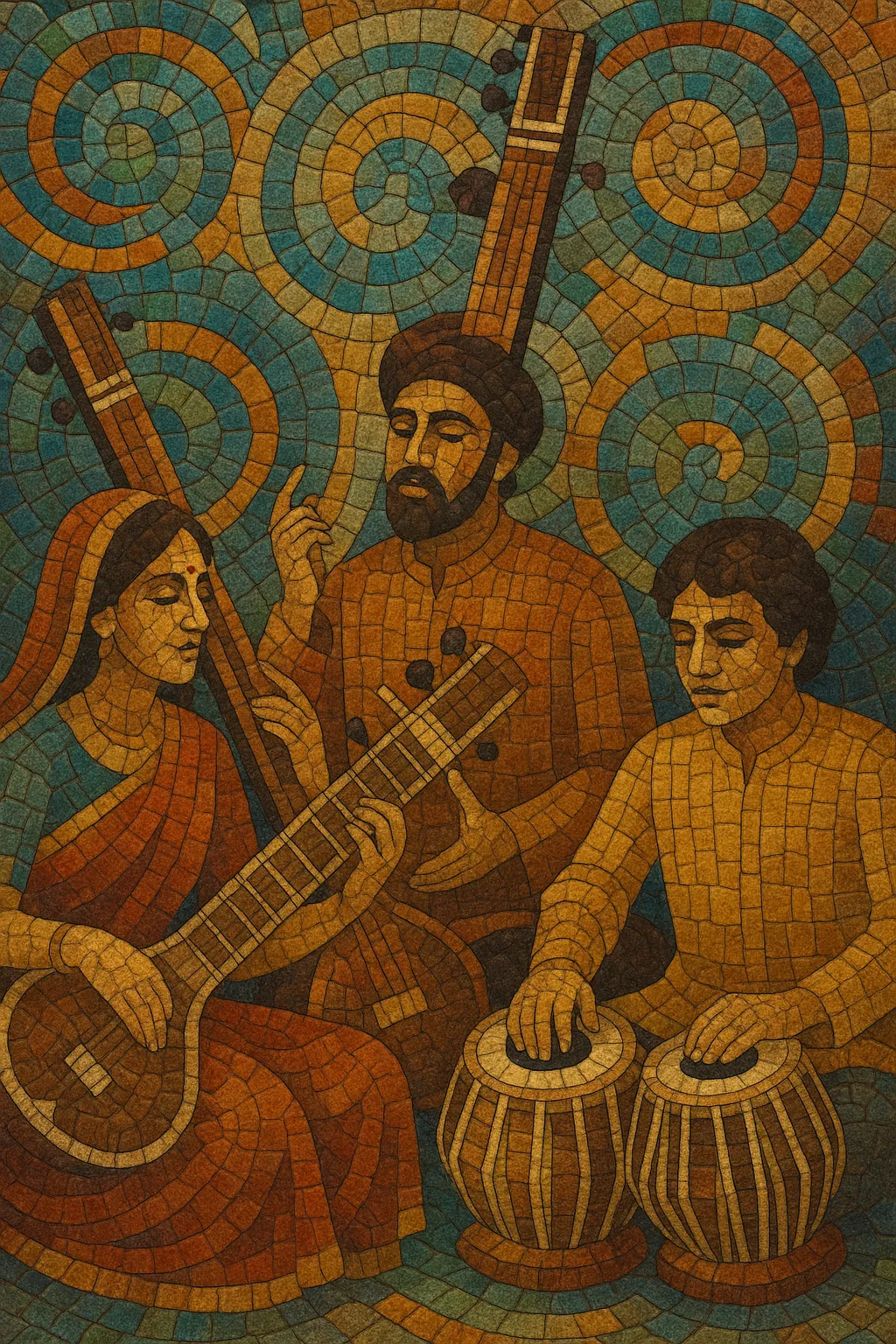Hindustani classical is the North Indian branch of the Indian classical tradition, centered on the concepts of raga (melodic framework) and tala (cyclical rhythm). It emphasizes improvisation within strict aesthetic and grammatical boundaries, unfolding a raga through a gradual, architected performance arc from free-rhythm exploration to metrically grounded elaboration.
Performances typically proceed through an alap (slow, non-metrical exposition), jor and jhala (rhythmic intensification on plucked instruments), and a composed piece—bandish or gat—set to a tala cycle, followed by improvisations (vistar, tans, bol-bant) that resolve emphatically on the sam (first beat). Signature ornaments such as meend (glides), gamak (oscillation), and andolan (slow vibrato) articulate microtonal nuance (shruti). The style encompasses vocal genres like dhrupad and khyal, and instrumental idioms on sitar, sarod, sarangi, bansuri, and shehnai, supported by a sustaining drone (tanpura) and tabla or pakhawaj accompaniment.
Beyond the concert hall, Hindustani classical has deeply informed sub-classical and popular forms across South Asia and, through mid-20th-century cultural exchange, popular and art music worldwide.
Hindustani classical crystallized in North India after the 1200s, diverging from the pan-Indic medieval tradition that later became distinct from Carnatic music in the South. Its roots lie in ancient Vedic chant and temple music, evolving through medieval courtly and devotional practices. The arrival of Persianate courts during the Delhi Sultanate and Mughal eras brought modal concepts and aesthetics that mingled with indigenous raga–tala systems.
Mughal patronage fostered a cosmopolitan synthesis. Dhrupad flourished in royal and temple settings, marked by majestic austerity and pakhawaj accompaniment. Over time, khyal emerged with a more lyrical, improvisatory ethos, allowing greater flexibility in ornamentation and rhythmic play. Musical lineages (gharanas) formed around masters and courts, each codifying stylistic preferences in raga chalan (movement) and tal handling.
The 20th century brought recording, broadcasting, and public concert culture, which expanded audiences beyond courts. Instrumental idioms on sitar, sarod, sarangi, bansuri, and shehnai developed robust concert formats, while tabla accompaniment attained virtuosic, soloistic status. From the 1950s–70s, global encounters with jazz, rock, and contemporary classical seeded Indo-jazz, raga rock, and world-fusion dialogues. Today, gharana identities coexist with pan-Indian pedagogy, and artists balance tradition with new collaborations, tuning systems, and compositional forms.
Select one raga and one tala to define mood and motion. Specify the raga’s vadi (primary) and samvadi (secondary) notes, pakad (signature phrases), and time-of-day/seasonal associations. Common talas include Teental (16), Jhaptal (10), Rupak (7), Ektal (12), and Dhamar (14).


